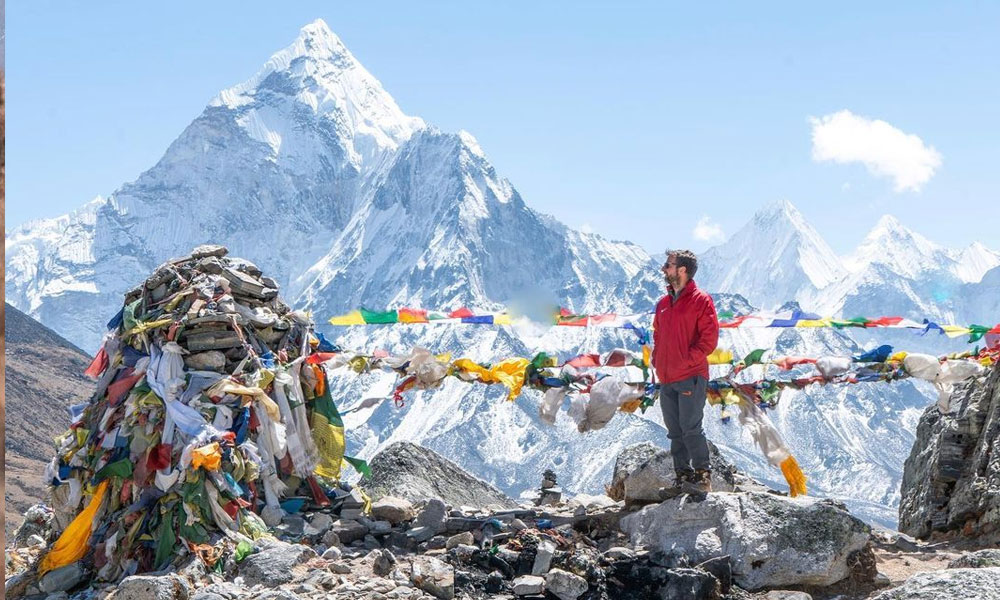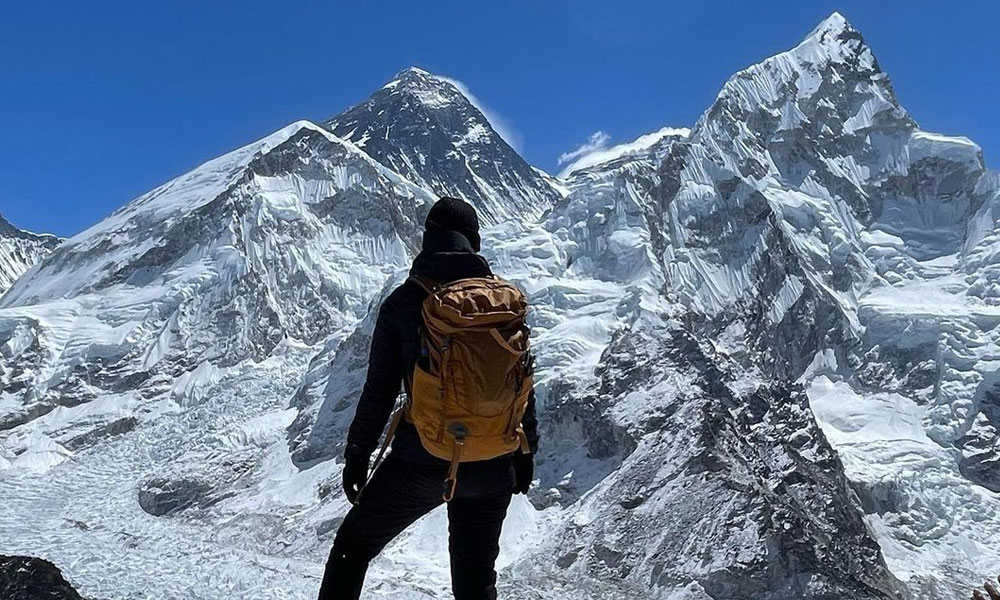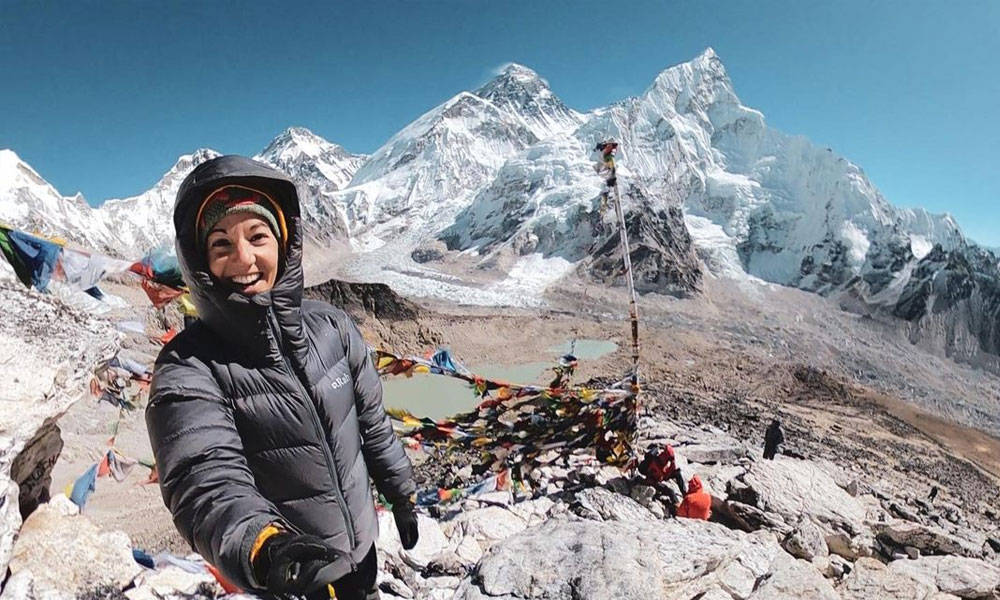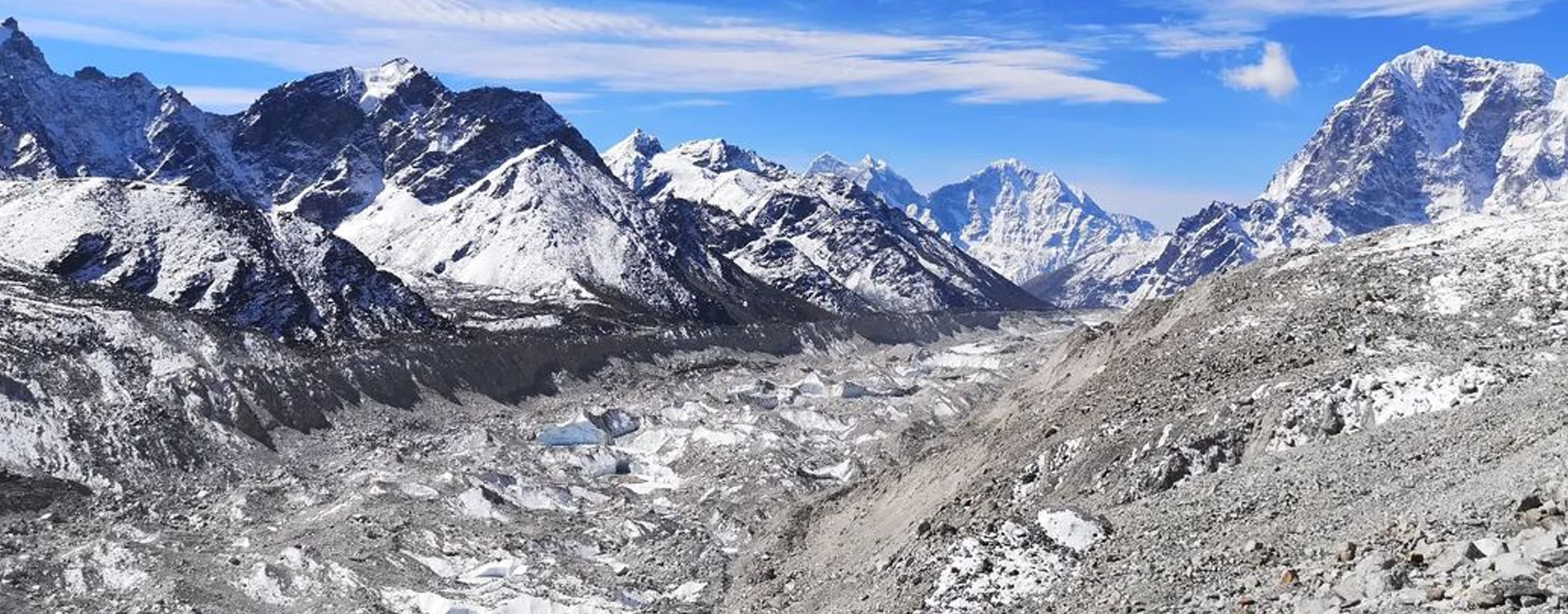Kala Patthar is one of the most acknowledged landmarks in the Himalayas, located on the south ridge of Pumori. It is 5,644 meters above sea level and provides the most accessible close-up view of Mount Everest and other peaks like Nuptse and Changtse. The hike to Kala Patthar starts after or before exploring the Everest Base Camp from Gorakshep. For important information, the world's highest webcam, The Mount Everest Web Cam, is located in Kala Patthar.
Kala Patthar usually means the ‘Black Rock’ in the Nepali language. Kala means Black, and Patthar means rock in Nepali. It is exactly located at the 27°59.750'N and 86°49.705'E.
Here is a quick fact regarding Kala Patthar of the Himalayas. Let's explore some of its interesting facts and how to get there.
How To Reach Kala Patthar Summit?

To reach Kala Patthar, people can opt for two options: trekking or flight. While trekking requires a lot of time allocation and preparations with physical fitness, gear & equipment, and more. However, the flight option is far more comfortable and time-saving. But both the options have a positive and negative side.
Trek to Kala Patthar might be adventurous and daring, but in the meantime, it can be physically exhausting. It can also bring several risks to natural hazards like landslides and avalanches. On the other hand, heli tours offer scenic aerial views of the Himalayas and surroundings. But it can be very costly compared to the adventurous trekking.
By Trek:

The trek to Kala Patthar starts with a flight from Kathmandu to Lukla. We must onboard a flight from Tribhuvan International Airport to Lukla (Tenzing Norgay Airport). It takes around 40 to 45 minutes to reach Lukla. As we onboard the plane, we pass through numerous villages, cities, forest areas, streams, and settlements and enjoy the pristine views of snow-capped mountains.
From Lukla, the first step is to reach Phakding. We will begin an uphill trek traversing Chheplung and Nurning's Buddhist settlements to reach the village. As we catch the trail alongside the Dudh Koshi River and walk enjoying the scenes of Mount Everest and Ama Dablam, we will reach Phakding Village.
From Phakding, we will walk through the alpine meadows and reach Monjo, where we can purchase a Sagarmatha National Park Entry Permit. After leaving Monjo Village behind, we will finally reach Namche, the Gate to Everest.
The next destination is to reach Tengboche from Namche, which can be reached after crossing Kenjoma and Phunke Thenga. An ancient gompa, Tengboche Monastery in Tengboche, offers pristine insights into Tibetan Buddhism in Nepal. From Tengboche, we must embark on a 6-hour trek to Dingboche.
From Dingboche, we will pass through the Sherpa settlements of Dughla and Lobuche before reaching Gorakshep. We must pass through high-altitude passes like Thokla Pass (4830 meters) and Lobuche Pass (5110 Meters) above sea level.
There is also a frozen lake called Gorakshep Tsho before reaching Gorakshep. It is the last Sherpa settlement in the Everest Region, comprised of stone houses and sparse settlements. From there, we must embark on a 6-hour walk to Everest Base Camp. After exploring the base camp, we will depart to Gorakshep and hike to Kala Patthar to see the sunrise.
Kala Patthar is one of the high-altitude viewpoints in the world, which offers a 360-degree view of the highest peak, Mount Everest. Similarly, the scenery of other peaks like Lhotse, Nuptse, and Ama Dablam are worth watching.
By Flight:
The only way to get to Kala Patthar by flight is by helicopter tour. We can opt for a group-sharing tour or a private chartered heli tour to Kala Patthar. The flight starts from Kathmandu and reaches Lukla after 45 minutes, where the aircraft needs to refuel. We can have lunch and explore Lukla Airport for around 15 to 30 minutes.
From Lukla, the helicopter will take you directly to Kala Patthar and land there. We will fly across the lush green forests of the Everest Region, the Dudh Koshi River, and several high-altitude passes like Thokla Pass, Lobuche Pass, Kongma La Pass, and Cho La Pass. After landing at Kala Patthar, we will be engaged in several activities like sightseeing, photography, and other sessions as per our will.
The helicopter tour offers magnificent aerial views of Mount Everest, Ama Dablam, Cho Oyu, Lhotse, and Nuptse.
Best Time to Visit Kala Patthar

Spring (March to May):
Spring, one of Nepal's most admirable and blissful seasons, is the best time to visit Kala Patthar. It starts in March and ends in May every year, bringing the colorful scenery into existence.
The wildflowers of the forests en route to Kala Patthar bloom while the trees change their green leaves, offering a vibrant and pleasant scenery. The lush green valleys, colorful rhododendron blooms, and clear skies make visiting Kala Patthar a special time.
On top of that, this season has a moderate temperature and fewer clouds in the sky, allowing trekkers to have safe and convenient navigation. The fewer clouds in the sky offer a clear visibility of the natural richness. Also, there is a minimal chance of rainfall and snowfall during the spring, which makes it easier to trek to Kala Patthar.
Autumn (September to November):
August is another prime time to explore Kala Patthar. From September to November, August also brings moderate temperatures and clear visibility. This season comes right after the monsoon ends in Nepal, so the environment is generally clean and clear, allowing trekkers to experience the majestic views of the Himalayas, lush green forests, and ever-flowing rivers.
The temperature is moderate, which trekkers can withstand easily during the exhausting trek. Similarly, the lower probability of rainfall and snowfall brings minimal chances of natural hazards like landslides and avalanches.
On top of that, August is a season of festivals in Nepal. Major festivals like Dashain and Tihar fall under this timeframe. It is a perfect chance to immerse yourself in the Nepalese culture and tradition. Especially when the tour to Kala Patthar is over, or before it starts, travelers can get insights into the festivals and their celebrations. In the Everest region, most people follow Buddhism, but the major festivals bring lots of joy and cultural immersion activities to the table.
Besides all that, the trail to Kala Patthar is dry and crisp, which makes it easier to navigate through the remote and ruggedness of the uneven landscapes.
You may also like:

